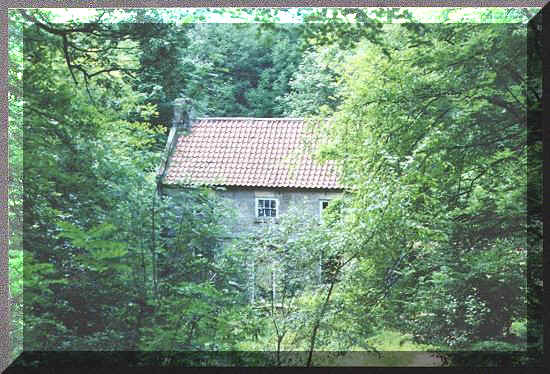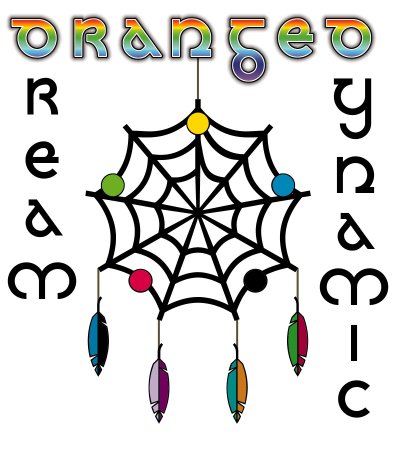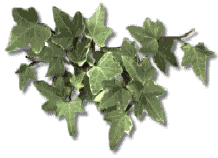WychWood WiseCraft
The Mother Tradition of the
DreamRange Dynamic
I. History and Beliefs
Founded 1998 by Rowyn MoonSong.
Influenced by Old (Familial) Witchcraft, Irish Traditional WitchCraft,
Welsh Traditional Wicca, Druidry and American and Celtic Shamanism.
Primary philosophy is self-realization resulting in discovery of the True
Path for each individual (NOT a single True Path that everyone needs to
follow!) and recognizing the True Will; thereby achieving the measure
of one's own harmonious existence in company with the Great Mother Gaia
and one's fellow- beings, human and other. Religious belief centers around
the Goddess and God in triple form: Maiden, Mother, Crone and Son/Lover,
Father/Warrior, Sage/Priest: and the FOURTH face of Divinity, the
One, ineffable and unknowable but approachable archetypally. Practice
of Magic, webworking, shamanistic and divinatory practice, earth
stewardship, personal creativity, Celtic ideals and understanding of the
Celtic Soul, and association with the Realms of Faery are required
of initiates. We are a Mystery Tradition with all the various oddities
that implies. Mystical experiences are encouraged, as is diversity of belief,
questioning and philosophical thought.
II. The basic service
When:
Formal Ritual is conducted for Initiations,
Elevations, Full Moons and Rites of Passage. New Moon workings are
private (initiates only) and vary greatly depending on the Moon (we
use the Celtic Lunar Calendar) with only three unchangeable elements, (unfortunately
not to be shared) whereas Sabbat Rituals, and personal ritual occasions
prepared and hosted by members, can be almost limitless in their
variety. We do ritual when we feel it would be appropriate; often we have
someone say they want to "ritualize" a particular situation or working
in their lives, so we do that. And sometimes by consensus we choose to
honor a particular festival by doing something other than ritual. We also
do "teaching Circles" which are rituals conducted for the purpose of teaching
or demonstrating a truth or an element of ritual.
Where:
Covenstead, in the Temple, or outdoors in
someone's personal Sanctuary Space (finding, identifying and sacreing one
is a requirement in pre-dedicatory work) depending on the nature of the
service. Sabbat rites and personal workings may be scheduled as the P/PS
desires, but lunar workings must be done at night under the Moon, during
one of the three "days of the moon."
What:
Informational meeting about a half-hour before
rite is scheduled, to greet and socialize and have an orientation concerning
the work, where we give lore, teach chants that will be used, etc. At this
time people may also be assigned roles in the Circle. We do spontaneous
Ritual, very rarely scripted and always encouraging of personal creativity.
Ritual space
is made sacred by all participants, not made sacred and then people are
admitted. If we have guests they are told they may join us in Circle for
this or be cut into the circle when it has been erected (their choice depending
on comfort level.) We use, in Full Moon and most other workings,
a traditional Circle form except that the altar and the starting direction
are variable depending on the focus of the work (Mabon rites, for
example, begin at sunset, and the circle is oriented to the West,
which is the direction where quarter calls begin.. And we sometimes cast
our Samhain Circle Widdershins to open the portal to the Underworld.) After
Sacred Space is established, Deity is invited, after which the business
of the rite proceeds. Libation follows the working, and there is often
a "talking circle" (if we have no guests) if we have not done that as part
of orientation, during which coven business and personal issues may be
discussed. We close with the Great Prayer, then the Circle is opened
in reverse order to the way it was cast. Ritual feast, to which guests
are welcomed even if they have not been invited to the Rite, always follows.
New Moon workings
are done in a Witche's Compass rather than a circle. Guests are not admitted
to these workings which are far more intense and arcane. Feasting and libation
are differently done, and may not take place at all.
Normal Sabbat and Full Moon
workings are from 1 1/2 to 2 1/2 hours counting libation time. New Moon
workings may be as short as an hour or may go very much longer depending
on the work. Rites of Passage generally last one to two hours.
III. Appropriate Attire
Both men
and women wear ritual robes and cords designating their degree of
advancement. Robes are of personal choice but must be of appropriate colour
(no black for Beltaine or weddings, for example). And no shoes,
watches or bound hair, nor any electronic devices such as pagers or cell
phones, may be worn in circle. All metal worn in circle must be consecrated,
and no iron is permitted as we regularly have the Sidhe in our Circles.
We do skyclad initiations and elevations, to which only those of like or
higher degree are invited.
IV. The Sanctuary
We do not
admit anyone not of the Coven into our Temple. (When guests are invited
to a rite at covenstead, the rite takes place in the Assembly Hall or outside
in the back yard.) As far as format of altars, they are entirely at the
disposal of the P/PS of the given rite, except that the Coven tools are
usually used in preference to personal tools. We have one set of tools
that belongs to the Coven which is used in all workings, but anyone who
wishes to have a certain personal thing on the altar for a given ritual
is encouraged to do this. We encourage less reliance on "stuff" and more
use of natural and "found" objects in creating altar space, especially
out-of-doors.
V. The Service
When should guests arrive and where should they sit (stand)?
Guests are always someone's
"guest" so they will arrive with that covener. They will be welcome anywhere
in Circle they choose to stand except at the altar.
If
arriving late, are there times when a guest should not enter the service?
No one, whether guest or
member, who arrives so late that we have begun ritual, is admitted
until we are finished. If we know someone is going to be there but is delayed
we will wait for them.
Are
there times a guest should not leave the service?
During quarter calls, Deity
invocations, DDM, libation, or circle casting or opening. During other
times one may ask to be cut out and the Guardian will do so.
Who
are the major officiants, leaders or participants and what do they do?
There is always a Ritual
Leader, either HPS, HP or both (or several). There is a Guardian and also
a Maiden in most circles. The HP/HPS conducts the rite, the Maiden assists,
and the Guardian looks after the participants (places chair or provides
water if someone seems faint, cuts people out, deals with disruption, etc.)
Since we do nonscripted, spontaneous ritual, many times people calling
quarters or cleansing or charging, etc, will be standing in the Circle
until called upon.
What
are the major ritual objects in the service?
Varies depending on the purpose
of the rite. The coven candle and shield and representations of Deity,
directions and elements are always present.
What
books are used (in the service)?
None. We do not read ritual
parts. They are either memorized or spontaneously created.
How
is the order of the service announced? (program, pre-ritual meeting, none)
Either in orientation if
it is complex, or as we go along by the HP/HPS ("Amaranth will now
charge the space with air and fire.")
VI. Guest behaviour during
the service
Will
a guest who is not a member of the tradition be expected to do anything
other than sit?
Yes. We expect that guests
are there because they are interested, and so mere looky-loos are actively
discouraged. If you are in Circle with us you are expected to listen, partake
of libation, attend to the working and assist as you may. If you are made
uncomfortable by anything you are seeing or doing you are welcome to ask
to be cut out of Circle. You then go into the Assembly Hall, and when we
are done we will be happy to join you for feasting.
Are
their parts of the service in which a guest who is not of that tradition
should NOT participate?
No. It is expected that if
guests have been invited they are to be fully participatory. If there are
going to be Mysteries explored, guests are not invited to that ritual.
If
not disruptive to the service, is it OK to:
-
take pictures? flash?
-
use a video camera?
-
use a tape recorder?
No, and No, and No. No more so
than it would be at Mass or a Protestant Worship service. Exceptions are
made for weddings and baby blessings, but never while Circle is going on--before
or after.
Will
contributions to the church be collected at the service?
No. We do not ask money of
members, especially not on ritual occasions, and would never expect contributions
from guests. The Covens are run on a mutually supported basis...when something
that costs money is planned people contribute as they will or can.
How
much is customary to contribute?
N/A
VII. After the service
Is
there usually a reception after the service?
Feast is part of all our
meetings and workshops. Always potluck and guests are welcome to bring
something but it certainly isn't required.
Is
there a traditional form of address for clergy whom a guest may meet?
When introduced we use our
public "magical" names, without a title. "Hi, I'm Beaver." "This is our
Priest, WolfSong". While we are actually IN circle if someone needs
to address the officiant it is "Lord or Lady" so-and-so. After ritual people
often revert to mundane names. We never use Craft (coven) names in the
presence of guests, and Lord and Lady are never used outside of ritual,
except privately among coveners, since we believe these designations are
marks of respect given where earned, not taken as a right.
VIII. General guidelines and
advice
Other information is reserved
for those who apprentice to our tradition. However, it is perfectly permissable
to ask questions, even during the service.
IX. Special Vocabulary
Key words or phrases which
might be helpful for a visitor to know.
-
Deosil--sunwise,
move to your own left
-
Widdershins--counterclockwise,
move to your own right
-
Esbat--a
lunar ritual meeting
-
Sabbat--a
solar festival
-
Merry Meet---ritual
greeting
-
Blessed Be--"Amen"
to a statement "I thank the Gods for my return to health" for example.
-
So Mote It Be--"Amen"
to a petition, "Goddess grant I get the job" for example
-
Charge--to
consecrate something, someone or someplace
-
Libate--sharing
of "holy communion"
-
Cast--to
create a Circle, make Sacred Space
-
Open--to
release the Circle, make mundane space
-
Between the Worlds--ritual
space, time outside of time. When the HP/HPS has said this, we need to
be given permission and cut out of the Circle in order to leave.
-
Ley lines--marked
clearly and pointed out in circles where they are used. DON'T step on them.
If someone says "Mind the ley!" you STOP instantly and check where your
feet are.
-
Aspect--DDM.
When aspected, or "inhabited", the mundane person is not there. If this
is your host (you are that person's guest) ask your question of someone
else. DDM means "Drawing Down the Moon" which means aspecting the Goddess.
-
Ground--release
energy, sometimes actually sit on, or touch, the ground and let yourself
come back from astral space. Very important that guests and newbies understand
this concept well enough to actually DO it.
-
X. Dogma and Ideology
Members
of this Tradition believe:
-
In immanent rather than transcendent
Deity
-
In personal transformation as
the goal of earthly existence
-
In archetypal Deity (Jungian
constructs) as well as living Beings and ancestral Spirits as God/dess
-
In reincarnation and communion
with loved ones and friends in other lifetimes
-
In personal meaning to life,
intended by the One and understood premortally, which may be discovered
and aligned with in this or subsequent lifetimes.
-
In mysticism and the Mystical
Experience
-
In other Realms which we can
interact with and actually visit
-
In the actual existence of the
Sidhe
-
In the sacredness of clan and
family relationships
-
In Stewardship of Nature
-
In the Celtic Virtues
-
In personal responsibility
-
In Anarchy
-
In Honor
XI. Holy Days and Festivals
Eight Sabbats, twenty-six
moons, feast of one's patron Deities, Anniversaries of the Trad.
XII. Life Cycle Events
birth, marriage (or commitment
in samesex relationships), naming, thresholding (manhood or womanhood rites)
rites of handparting, lifechange (dedications, initiations, croning,
saging, elevations within the trad) personal milestones.
XIII. Home Celebrations.
Personal practice is a requirement
for dedicants and initiates. Daily ritual and personal study and practice
highly encouraged.
Some sources (brochures, books,
URLs).
Books:
White Goddess, Spiral Dance,
Myths to Live By, Practical Magic, Way of the Goddess, Ancient Ways, Secrets
of a Witch's Coven, Call of the Horned Piper, Witchcraft, the Sixth Sense,
Carmina Gaedelica, The Celtic Shaman, A Wiccan Bardo. None of these contains
our tradition but all contain pieces of it. Personal one-on-one teaching
is necessary to "get it."
URLs:
http://www.toteg.org |


